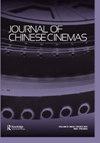Murderous shadows, terrifying air: Dr. Caligari in China
IF 0.4
3区 艺术学
0 FILM, RADIO, TELEVISION
引用次数: 1
Abstract
Abstract This article traces the relocation of The Cabinet of Dr. Caligari to interwar China, when the nation began to experience a proliferation of terror amid the bleak premonitions of an impending war. Revising Kracauer’s famous interpretation of the film, I reformulate terror as an environmental experience that goes beyond both national and psychological terms, identifying instead the cinematic design of shadows and air as the primary site of horror that hails wartime subjects into being. With a major reference to Fei Mu’s much-neglected work Nightmares in Spring Chamber, the article conducts a transnational mapping of discourses and styles informed by the German and Chinese discussions of air and atmosphere. In cross-referencing genres, critical accounts, and military cultures, this study introduces ‘mismatches’ to Dr. Caligari’s reception in China in hopes of defying the thesis of unidirectional influence often assumed uncritically in transnational film studies.凶残的阴影,可怕的空气:中国的卡利加里博士
摘要这篇文章追溯了卡利加里博士的内阁搬迁到两次世界大战之间的中国,当时这个国家在战争即将到来的惨淡预兆中开始经历恐怖活动的扩散。回顾克拉考对这部电影的著名诠释,我将恐怖重新定义为一种超越国家和心理术语的环境体验,相反,我将阴影和空气的电影设计确定为战争题材产生的恐怖的主要场所。本文主要参照费穆被忽视的作品《春室梦魇》,从德国和中国对空气和氛围的讨论中,对话语和风格进行了跨国映射。在交叉引用流派、批判性叙述和军事文化的过程中,这项研究将卡利加里博士在中国的受欢迎程度引入了“不匹配”,以期挑战跨国电影研究中经常不加批判地假设的单向影响的论点。
本文章由计算机程序翻译,如有差异,请以英文原文为准。
求助全文
约1分钟内获得全文
求助全文

 求助内容:
求助内容: 应助结果提醒方式:
应助结果提醒方式:


